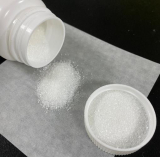Chinese VersionChina Suppliers > Hubei new DE sheng material science and technology co., LTD. > Blood collection tube anticoagulant EDTA, heparin and sodium
- Search Product
-
- Details for Blood collection tube anticoagulant EDTA, heparin and sodium
-
Blood collection tube anticoagulant EDTA, heparin and sodium
Category : Laboratory Chemicals

CAS NO : EC NO : MF : MW : Product description : When it comes to anticoagulants, many people don't understand what they are used for. Simply put, anticoagulants are chemicals that prevent blood clotting. It is very commonly used in blood collection tubes used in hospitals to collect blood for testing. In different blood tests, the applicable anticoagulants are also different. Commonly used anticoagulants include EDTA, sodium citrate, heparin, etc. Let's take a look at the mechanism of action of these anticoagulants. Because blood coagulation is divided into three main stages: first, prothrombin activator is formed; second, prothrombin activator catalyzes the conversion of prothrombin into thrombin; third, thrombin catalyzes the conversion of fibrinogen into fibrin . In these three stages, the participation of calcium ions is required, so once the chelated calcium ions are removed, the blood loses the necessary conditions for coagulation and cannot be coagulated. 1. EDTA (ethylenediaminetetraacetic acid) There are three different forms of EDTA ethylenediaminetetraacetic acid anticoagulant, namely EDTA dipotassium, EDTA tripotassium, and EDTA disodium. Tripotassium EDTA is relatively easier to dissolve and is more popular than other forms. EDTA plays an anticoagulant effect mainly by chelating calcium ions and removing free calcium ions. 2. Sodium citrate Sodium citrate combines with free calcium to form a sodium citrate complex, which consumes calcium to achieve anticoagulant effect. The recommended anticoagulant concentration is 3.2% or 3.8%. The ratio of anticoagulant to blood is 1:9 and 1:4. Blood after sodium citrate anticoagulation cannot be used for compressed cell volume (PCV), hemoglobin (Hb) estimation, total white blood cell count TLC, and differential white blood cell count (DLC) because citrate is used as a solution and it changes blood concentration. 3. Heparin Heparin is an acid mucopolysaccharide with affinity for blood proteins and can be used as antithrombin and antithromboplastin. It prevents the conversion of prothrombin into thrombin, thereby playing an anticoagulant effect. As an anticoagulant, heparin is often used in emergency biochemistry and blood rheology testing. Synonyms : no data
- Inquire
-
Blood collection tube anticoagulant EDTA, heparin and sodium